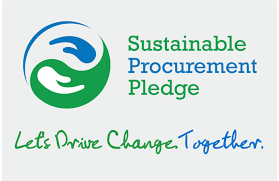The Sustainable Procurement Pledge online get-together last week was excellent. Around 160 people tuned in to a very well-planned and delivered session. After some background and discussion of SPP progress, we got into the meat of the session – all about the legislative landscape for ESG and sustainability issues.
It was pretty intense – the speakers were very disciplined and stuck to their 5-10 minute slots, but packed in a huge amount of content. Legislation doesn’t perhaps sound the most exciting element of the sustainable procurement agenda but it is really important for everyone and actually once you get into it, there is more of interest and certainly more to make you think than you might expect.
Michael Littenberg from law firm Ropes & Gray led off. He talked about three “buckets” (categories) of legislation. The first simply requires disclosure. Usually this means making declarations in annual reports, describing compliance measures. So firms have to declare what they are doing for example to mitigate the risk of modern slavery in their supply chain in several regions and countries now, including the UK, Canada, Australia and California. The new EU Corporate Sustainability Reporting Directive (CSRD) which came into force in January requires further disclosure of this nature.
Perhaps more interesting is the second “bucket” that requires firms to go further and actually take action rather than simply making statements. Firms will need to explain “substantive effort” as Littenberg put it to address issues such as conflict minerals and child labour. This mandatory human rights due diligence is becoming more common, requiring more detailed processes and systems to address this. In other words, it won’t be enough to just say “we have a policy and we’ve sent it to all our suppliers”. We will have to show we have taken pro-active steps to address the biggest risk areas. An example of this sort of regulatory approach is the proposal for a Directive on corporate sustainability due diligence (CSDD) in the EU.
The third area is around trade-based approaches. In the main, this is about prohibiting imports or exports. The US is addressing “forced labour” through the Uyghur Forced Labour Prevention Act of 2021 for instance. It bans imports from the Xinjiang Uyghur Autonomous Region (XUAR) in the north-west of China, unless the importer can clearly prove that the goods from this region are not produced via forced labour. Canada and Mexico have adopted similar rules and the EU is considering this. Deforestation is another issue which is increasingly being addressed by trade. EU policymakers are close to signing off new regulations aiming to prevent the sale of products such as palm oil, coffee and chocolate if they have been produced on deforested land.
All this growth in regulatory activities is of course on top of what organisations choose to do simply because of their own purpose and sustainability priorities. But we can see that regulation is catching up quickly with what the “better” organisations have been doing for some time – such as not buying products connected with deforestation. But the regulations will force the laggards in terms of sustainability into real action over the next few years.
Littenberg finished with some recommendations.
Leverage existing compliance programmes – I wasn’t sure to be honest whether he meant within your own organisation or more widely, using collaboration or shared platforms. I would assume that both can be useful.
Approach holistically, look at the big picture - so don’t look at every aspect of the ESG / sustainability picture as a separate issue.
Consider centralised approaches – that is more effective and efficient and allows you to build up domain expertise. That’s most relevant for larger organisations of course but seems like very sensible advice.
Louise Herring of AIM-Progress (an organisation that supports collaboration between buyers in terms of responsible sourcing) took the debate on. She made some further pragmatic recommendations in terms of how you can implement programmes, particularly those connected with human rights in the supply chain.
- Look for openness and engagement with suppliers, not just reporting and compliance.
- Put in place a supplier code of conduct.
- Make sure your commercial and contractual terms support the human rights aims. Look on this as a long term investment in supporting human rights.
- Practice “responsible disengagement”. Firms just walking away from suppliers when they find a breach or problem doesn’t help anyone, certainly not the people who are on the receiving end of the issues. Work with suppliers to resolve problems as a first step and be very cautious about just terminating a relationship.
All very good advice and there was more during the session, which I will come back to next time. But here is a key take-away to finish with.
The developing regulatory environment means you can’t just hand-off risk by sending out some nice policy statements. Increasingly, the buyer will be seen as owning a large part of that risk; so we need to make sure we are handling and mitigating that effectively.
